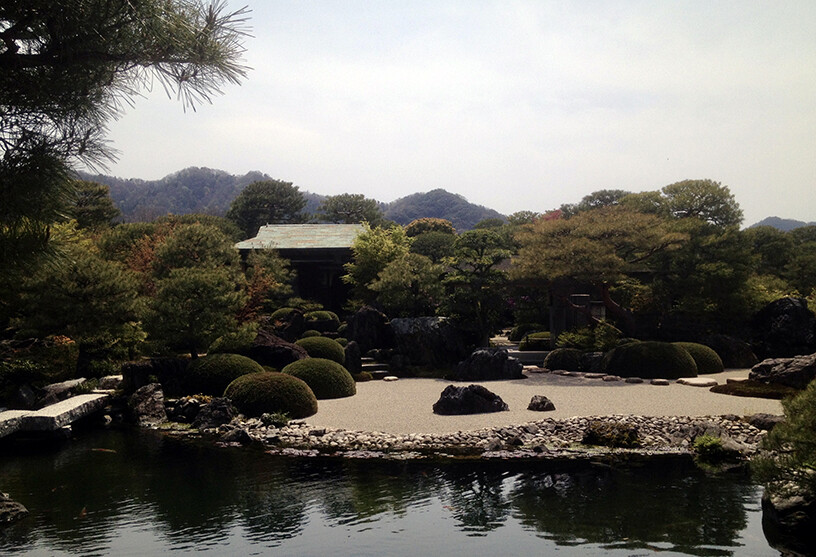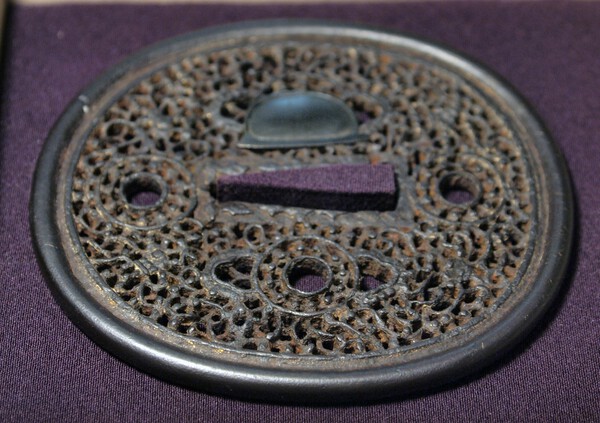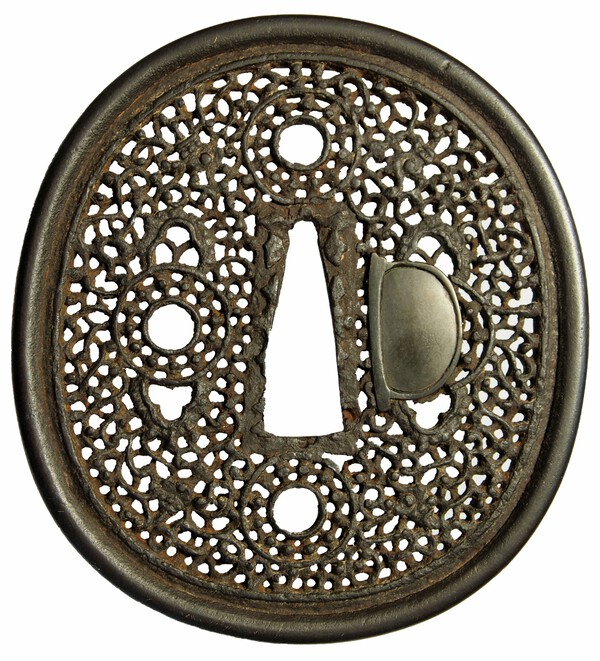-
Posts
2,901 -
Joined
-
Last visited
-
Days Won
3
Content Type
Profiles
Forums
Events
Store
Downloads
Gallery
Everything posted by Soshin
-
Hi Matt L., You can submit the whole tanto koshirae to NBTHK shinsa. Here is a link with more information: http://www.touken.or.jp/english/shinsa_fees.html. Here is a quick list of things I can think of off the top of my head. Please anyone feel free to add to it if I have missed any. 1. All of the major pieces (menuki, fuchi-gashira, tsuba, kogatana, and kozuka) of the koshirea need to be antique and made before 1868. 2. Be in good condition without flaws, fire or major rust damage. 3. All of the signatures of the major pieces (outlined above) must be authentic for it to pass. 4. If one pieces fails the three above points the whole koshirae fails. Alternative approach would be just to submit a signal major piece of the koshirae (ex. tsuba). All of the first three above points still apply. I hope you find the information helpful. Yours truly, David Stiles
-
Hi Mike Y., Where can Fukushi sensei book be purchased if you live in the USA? Do you have it for sale at your website or can you buy the book at the NBTHK Japanese Sword Museum in Tokyo? Please don't say that it can only be purchased on Yahoo Auctions Japan. :lol: I love that Umetada Myoju tsuba on the cover. I currently have a nice photo of that tsuba from one of my issues of NBTHK monthly magazine. Yours truly, David Stiles
-
Hi John L. and Henry W., Relax my hypothesis about the Christian cross design isn't even testable and it isn't a big deal. I often see copied western designs done in European influenced Namban tsuba. Many of these copied designs are not identical to European original and have a fair amount of stylistic or nonsensical changes to them. One of my favorite is the nonsensical Indo-Arabic numbers and Roman letters across the bottom of some Namban tsuba. To me they almost look like very imaginative serial numbers. :lol: The Japanese artist likely making my tsuba might have seen a Christian Cross on the fabric or clothes of visiting Portuguese or Spanish or among other imported European art (Namban-e) and just incorporated the design into the Namban tsuba he was making. Likely thinking that having such a cool European style symbol would be nice for a Namban tsuba. None of these ideas are testable but in my opinion but still fun to think about. Yours truly, David Stiles
-
Hi Curren, No problem I can bring the tsuba to the Florida Show next February for you and anyone else to have a look at. I enjoy playing show and tell. I would consider this tsuba a keeper for my collection. I don't see my tastes changing all that much in terms of tosogu. Next year I will likely submit it to NBTHK shinsa as It is one of the best tsuba in my collection and is likely my best chance for my first Tokubetsu Hozon papered tsuba. Did some searching on the Internet last night and found the following early examples of Namban work from a Japanese dealer's website. 1. http://www.finesword.co.jp/sale/kodougu/htm/1051_2000/1351_1400/1390/k1390.htm Comments: This tsuba is without shinsa paper. The dealer thinks this tsuba dates to the early Edo Period. The circular holes are filled with mother-of-pearl (Jp. Raden). Notice the large size of this tsuba over 8.0 cm. I think this is characteristic of many early Namban tsuba. 2. http://www.finesword.co.jp/sale/kodougu/htm/1051_2000/1451_1500/1475/k1475.htm Comments: This tsuba is also without shinsa paper. The dealer thinks this tsuba dates to Momoyama Period. Looking at it it looks much younger then my tsuba in terms of the iron and the condition of the inlays. The ryo hitsu-ana doesn't look like they were added all that well. The large size of this tsuba also would indicate a earlier production. Hi Sage, The dote-mimi style can be created by either a turning back of the iron of the rim or the addition of another piece of iron of identical type. The second type of dote-mimi can also be considered a iron fukurin. For my tsuba it looks like the dote-mimi was made by another piece of iron of identical type making it also a iron fukurin. The iron fukurin in my case is original. Hi Everyone, After considering all of the elements of the design on the tsuba I think it was likely a early Christian Cross the design was likely accented with gems as John L. has suggested. Later in the Edo Period the gems were removed and the kozuka hitsu-ana was added and cross design was disrupted. This was likely during the rule of the third Tokugawa Shogun when Christianity was seriously suppressed. Below is a link to a Google images search for "early Christian Cross". Discussion and feedback about my hypothesis is always welcome. I am on vacation this week so I will have time discuss. :D http://www.google.com/search?q=early+Christian+Cross&hl=en&prmd=imvns&tbm=isch&tbo=u&source=univ&sa=X&ei=PQNrUMDwDMaG0QHo94HQBg&ved=0CDUQsAQ&biw=1366&bih=681 Yours truly, David Stiles
-
Hi John L., Here is a scan of two tsuba considered to be early Namban in the Token Bijutsu article in issue #646 which I have quoted Fukushi sensei. Who is only human and can't be a expert in all schools of tosogu. How early isn't completely sure as the descriptions of both tsuba do not directly discuss their age. The one in the upper part of the page I really like. In the description it discusses abraded zogan which is similar to what I see on my tsuba. Both examples I think have a feel of not being as old as my tsuba but I can't confirm this from looking at photographs alone. On a related note I was sent a private messaged today by a long time and distinguished collector of tosogu congratulating me on what he considers to be a fine acquisition. He also goes on to agree with John L. attribution of my tsuba as a fine rare Momoyama Period Namban tsuba. Yours truly, David Stiles
-
Hi Curren, Here is another photo I did upon request with my camera in hand without setting up the tripod, head, and base and setting the tsuba box on the dinner table. The thickness at the seppa-dai is 3.0 mm and the area of the plate consisting of the scroll work (i.e. arabesque) design between the seppa-dai and rim is looks thinner I would say from looking at it approximately 2.5 mm. I hope you find this additonal photo helpful. Yours truly, David Stiles
-
Hi Everyone, Here is the photo I did of the omote side of my new Azuchi-Momoyama Period Namban tsuba this afternoon. The measurements of the tsuba are 8.0 cm by 7.3 cm. The dote-mimi style rim has a thick at 4.0 mm. I also did more reading and have uncovered some additional informaiton about early Namban workmanship from the writings of Fukushi sensei in Token-bijutsu No. 646. Comments and questions for discussion are welcome. Thanks for reading. :D Yours truly, David Stiles
-
Hi Everyone, I also agree with Brian R.. I have a copy of Mr. Haynes book but I don't have or seen any examples with a double nakago-ana. Back to my photo work. Yours truly, David Stiles
-
Hi Everyone, The first generation Jakushi was a painter who trained in traditional Chinese style painting and later turned to making tsuba often with same Chinese style landscapes. He was located in Hizen Province during the early part of the Edo Period. He used a acid and heat technique along with some inlays to form the designs. yours truly, David Stiles
-
Hi John L., I have not seen any other tsuba outside of the book you are referring to. Sorry I can't be of any help. Yours truly, David Stiles
-
Hi John L., I noticed that Grey Doffin referred to the gold inlay as nunome on this description of the tsuba on his website. After looking at the tsuba with a hand magnifying glass. The gold inlay type is clearly nunome-zogan the crosshatching is light but apparent specificity along the edge of the dote-mimi style rim. The small amount of gold that remains looks like bright flakes of gold along a rich dark background of the iron's patina. I hope to be able to post some of my own photographs of the tsuba tomorrow. Take care everyone and have a wonderful weekend. Yours truly, David Stiles
-
Hi John L., The worn off gold inlays is I think of the nunome-zogan type but I don't remember seeing the checkerboard cross hatching of the iron plate near the gold inlays. The inlays were present on the rim and along some parts of the scroll work. I am not familiar with the other inlay type that you listed. What does it look like? After work I take another look at the tsuba. Yours truly, David Stiles
-
Hi Henry, I now have the tsuba in hand as it came in the mail this afternoon. Looking more at the tsuba in hand its designs are remarkable and the patina and quality of the iron is just wonderful. The very detail scroll work remind me of Arabesque seen in classical art of southern Europe of Portuguese or Spanish influence. Not much of a southern Chinese influence in the design of this tsuba. This European influence would indicate the early part of the Azuchi-Momoyama Period as the age of the tsuba having the Portuguese visiting Japan first in 1543 and the Spanish in 1584. The remains of gold inlays along the rim also gives the tsuba an even more antique appearance. Reading Skip's note about the tsuba it says "Namban, Christian Cross, Momoyama Period". Does anyone else see a Christian Cross? The cross might be in the placement of the four rings around the nakago-ana. Christian M. gave me a copy of a old article about Namban culture during the Momoyama Period. I will find it and read it. Here is some information I came across from NBTHK monthly magazine by Fukushi sensei in issue #646 about Namban tsuba. I will try to take some photos of the tsuba over the weekend when I have some free time. Take care and thanks for reading. :D Yours truly, David Stiles
-
Hi John L., You are correct I am the new owner of that tsuba. It is currently in route which is why I was not discussing it directly. My original source of information was Tsuba An Aesthetic Study which discuses the original Namban having a date circa 1500 and being made in southeastern China and imported to Japan. I was thinking this trade in original Kanton Namban tsuba were part of the increased trade between the Ashikage Shogun and mainland China. The trade facilitated by the Portuguese would have taken place during the early part of Momoyama Period. The Dutch and their East Indies Company and the English would have been late Momoyama to the early part of the Edo Period with their trade. Thanks for the additional information and references. In regards to kozuka-hitsu ana I agree it is not original to the tsuba likely added in the early part of the Edo Period. With that said the plugging of it looks to be very nicely done likely in the late Edo Period when tsuba were again being made without kogai or kozuka hitsu ana. Yours truly, David Stiles
-
Hi John L., You request reminded me of the following nice tsuba sold on Grey's website over the weekend: http://www.japaneseswordbooksandtsuba.com/store/holbrook-tsuba/h304-sumifuranaohiro. As Pete also linked to his website Grey maybe a good source of information. I am not that familiar with the collection. Sorry about not being much help. Yours truly, David Stiles
-
Hi Everyone, I am looking for some refernces with examples of very early Namban tsuba of the Muromachi Period. These would be tsuba made in China and exported to Japan. This is for a comparative study. Let me know if you have any questions. Thank you very much. Yours truly, David Stiles
-

New Tampa show
Soshin replied to Stephen's topic in Sword Shows, Events, Community News and Legislation Issues
Hi Curran and Stephen, I am planning to attend the new Tampa show next year. :D I am glad they moved it away from V-day in February as I will be sending that day with my wife. I will fly in on Saturday morning from Washington, DC and stay until late Sunday afternoon. I will be booking my flight shortly. Yours truly, David Stiles -
Hi Everyone, I purchased a unpapered wakazashi from him at a low price. Good communication no problems. I submitted it to the NTHK shinsa in 2006 and it failed for having a gimei. I resold it on eBay in 2007 for about what I paid for it. Maybe I need to start saving up for a Nihonto again. Take care. Yours truly, David Stiles
-
Hi Pete K., Is Fukushi sensei completely retiring from the NBTHK? Will he still participate in shinsa? I hope the NBTHK Tokyo branch has someone younger to keep writing about tosogu for the monthly magazine possibly one of Fukushi sensei students. I am assuming someone of his status has a few students. Yours truly, David Stiles
-
Hi Pete K., Does this mean Fukushi sensei is retiring from writing this almost monthly section for the NBTHK monthly magazine? I did notice this months maginze did not have his tosogu section. His work along with Markus S. translations have greatly contributed to my understanding of tosogu. Thanks for providing additional information. I still often refer to his four articles discussing the Umetada school. Yours truly, David Stiles
-
Hi Mauro, Well I think in both my tsuba cases the chisel marks are keshō-tagane (化粧鏨) and are decroative in nature. They are not specific to a specific artist and therefore would not be considered kakushi-tagane (隠し鏨) or tagane-mei (鏨銘). This type of tagane work on the surface is often found in Ko-Umetada and early Umetada school work. Yours truly, David Stiles
-
Hi Mauro, Yes I am very familiar with that book. I have my own copy and I often use it as it is a really helpful resource. Looking at tagane-mei (鏨銘) as you call this type of surface treatment is often found on Ko-Umetada and early Umetada school work. This along with great turn-black treatment of rim and quality of the kin nunome-zogan (gold inlay) makes me think this tsuba is a work of the Ko-Umetada school circa the Momoyama Period. Attached is another early Umetada tsuba I have with tagane-mei similar to iron nanako between the 16 petals of the chrysanthemum flower. Yours truly, David Stiles
-
Hi Mauro, I do see the similarities between my tsuba and the tsuba in the photos you posted in regards to the designs. In regards to keshō-tagane (化粧鏨) they are often found around the nakago-ana of a tsuba. They were sometimes very specific and could be used to identify artists that often didn't sign there work. Some of the different schools of tsuba makers in Higo Province were known to do this. Please see the following fine example posted on NMB: http://www.militaria.co.za/nmb/download/file.php?id=36961 of the Hirata school of Higo Province. The tsuba is mumei but the keshō-tagane (化粧鏨) show a very specific shape and pattern and the tsuba can be attributed to being the work of the 1st generation master Hirata Hikozo. Because the chisel work is distributed around the surface of the tsuba where there isn't gold inlay I was using the Japanese term ishime-ji (石目地) to describe the surface which has a almost stone like appearance. Attached is link to a high resolution composite photo of my tsuba above. Yours truly, David Stiles
-
Hi Moriyama-san, Thank you. I think you are correct about what the designs are. Yours truly, David Stiles
-
Lorenzo, Words are not semantics they are what we use to communicate. The tsuba that is the topic of post isn't bad but I generally don't submit things to shinsa if I think they will fail. If you read and understand the context of the link to what I had for sale it make sense because I was referring to the great number of Higo copies much of which are of average quality. In reponse to this idea that I can't tell a fake from a real tsuba because I don't buy off of Yahoo Japan. I really don't have time for this nonsense and I hope and prey you don't either. Goodbye. Yours truly, David Stiles







